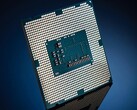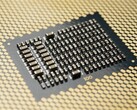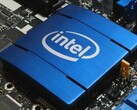Intel has been on its 14 nm process for years, as we covered in our Core i5-10300H article earlier this week. In short, Intel moved its H-series onto 14 nm nodes in 2015, with generational changes becoming increasingly minor in the last few years. However, there appears to be some confusion about what Comet Lake-H represents.
As part of the coverage of Comet Lake-H, some outlets have opined that Intel will base Comet Lake-H on its Sunny Cove architecture, which would mean a switch to 10 nm for the company's new H-series processors. This speculation seems to be predicated on the notion that Intel's 14 nm foundries are overloaded, and that it would be a good move to combat AMD's 7 nm Renoir series.
However, there appears to be no evidence that this is the case. On the contrary, all roads currently lead to Comet Lake-H being another 14 nm refresh. Firstly, an alleged Intel roadmap shows that the company does not plan to bring 10 nm to the H-series before the end of 2021. While it is easy to cast this aside as another leak, it accurately predicted the arrival of Comet Lake-H.
The minor performance improvement that Laptopmedia demonstrated between the Core i5-9300H and Core i5-10300H underlines this, too. Recent Geekbench listings have demonstrated that the Core i5-10300H carries the same "GenuineIntel Family 6 Model 165 Stepping 2" identifier as the Core i7-10750H and Core i9-10980HK do. Hence, there appears to be no evidence of Intel splitting Comet Lake-H between 14 nm and 10 nm nodes.
In short, Comet Lake-H is probably 14 nm+++, just as Comet Lake-U is. While we are not ruling out the possibility of Intel surprising everyone with 10 nm Comet Lake-H chips, the likelihood of that seems incredibly slim.






























